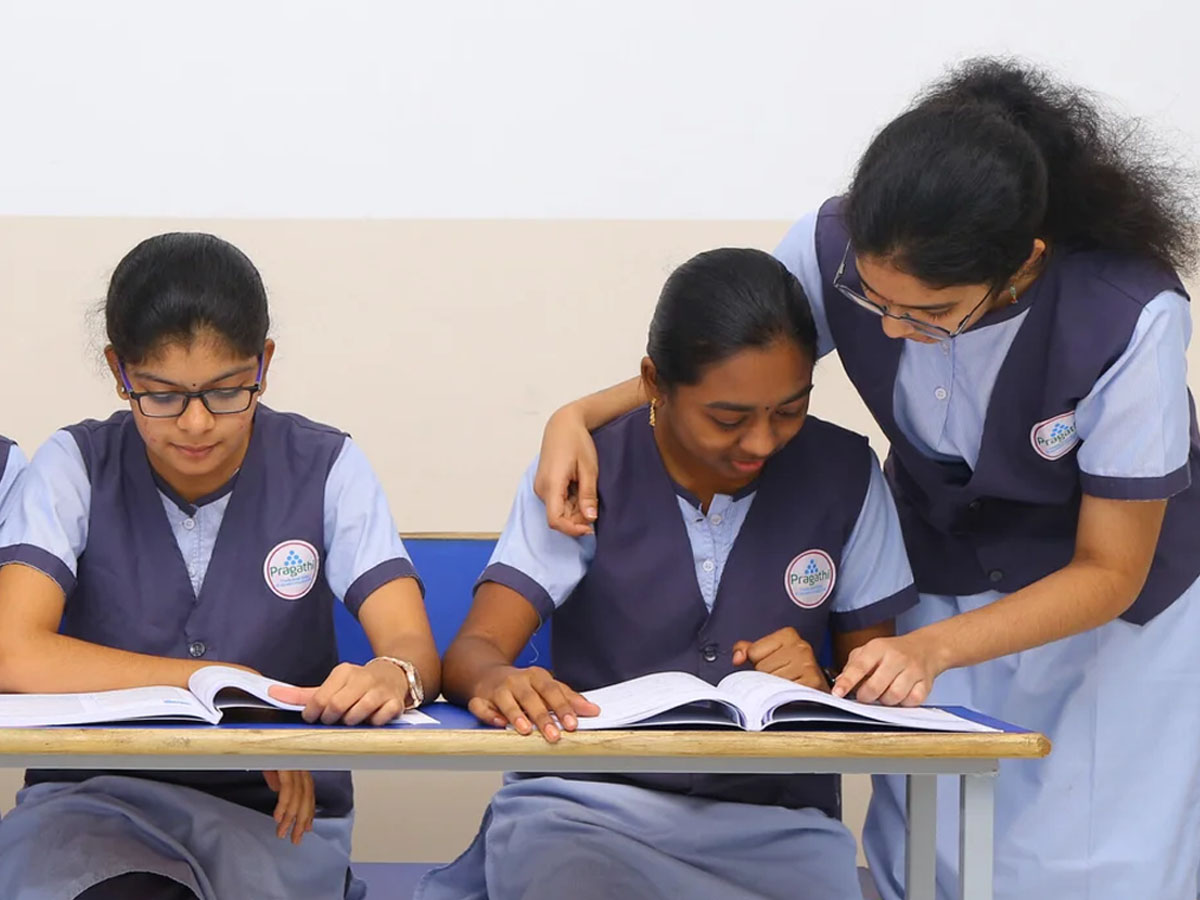
Academics
WThe Pre-primary education defines the early childhood years as those from three to five years. These years are distinctive in several ways. The rapid rate of development which occurs in the physical, social, emotional, intellectual and aesthetic domains is particularly significant. Although the progression usually occurs in recognisable and predictable directions, it is unique in each child, occurring at varying rates from child to child, and inconsistently for each child. For many children, these years also mark the first transition from home to group experience outside of the family and to a new physical environment. The school strives to make this adjustment as successful as possible by encouraging the development of secure and trusting relationships with new adults and peers. The experiences that contribute to children’s development and learning are defined by social and cultural contexts: the family and the home, the school environment and the children and adults within it, and the surrounding community.
Fully fenced secure grounds * Laboratories for Physics, Chemistry, Biology, Computers and separate rooms for Activity, Art, Craft, Music, Dance, Debates and Cooker LKG to Class 3 class individual student tables are fitted with slates to practice writing and scribbling with chalk piece for better writing
What do we want to learn? How best will we learn? How will we know what we have learned? What do we want students to learn?
Learning Concepts:
Our program strives for a balance between the search for understanding, the acquisition of essential knowledge and skills, the development of positive attitudes and the opportunity for positive action. In achieving this balance, the program consists of five components, which are referred to as the essential elements of the curriculum and are listed below. Powerful ideas which have relevance within and across the disciplines and which students must explore and re-explore in order to develop understanding. Key concepts are expressed as questions – form (What is it like?), function (How does it work?), causation (Why is it like it is?), change (How is it changing?), connection (How is it connected to other things?), perspective (What are the points of view?), responsibility (What is our responsibility?) and reflection (How do we know?).

Knowledge:
The body of significant and relevant subject matter we wish students to explore and know about. This knowledge is represented through six subject areas: languages, social studies, science and technology, mathematics, arts, and personal, social and physical education.

Skills
Thinking skills::the acquisition of knowledge, comprehension, application, analysis, synthesis, evaluation, dialectical thought, and metacognition.
Research skills:formulating questions, observing, planning, collecting and recording data, organising and interpreting data, and presenting research findings. Communication skills: listening, speaking, reading, writing, and non-verbal communication

Skills
Self-management skills: gross and fine motor skills, spatial awareness, organisation, time management, safety, a healthy lifestyle, codes of behaviour and making informed choices Social skills: accepting responsibility, respecting others, cooperating, resolving conflict, group decision making, and adopting a variety of group roles.
Attitudes and Actions
Characteristics that are expressions of fundamental values, beliefs and feelings about learning, the environment and people. Students are developing the following attitudes: appreciation, commitment, confidence, cooperation, creativity, curiosity, empathy, enthusiasm, independence, integrity, respect, and tolerance.
Actions: Demonstrations of positive action and service. Students are encouraged to reflect, choose wisely and to act responsibly with their peers, school staff and in the wider community. Through such service, students are able to grow socially and personally, developing skills such as cooperation, problem solving, conflict resolution and creative and critical thinking.

How best will our students learn?
We are committed to structured, purposeful inquiry, which provides multiple entry points meeting the diverse needs of our population and involves students actively in their own learning. The reason is simple. We believe that this is the way in which students learn in the most constructive manner. Students participate in engaging and motivational activities that enable them to develop a deep level of understanding. Student learning is characterised by the long-term retention of ideas, and by an awareness of its connection with other things, including life in the real world. How will we know what the students have learned? Assessment is integral to all teaching and learning. It is central to our goal of thoughtfully and effectively guiding students through the five essential elements of learning: the understanding of concepts, the acquisition of knowledge, the mastering of skills, the development of attitudes and the decision to take action. Both students and teachers are actively engaged in assessing students’ progress as part of the development of their wider critical thinking and self-evaluation skills. There is a range and balance of school-based assessment strategies. These include student-teacher conferencing, writing samples, structured observation, and performance tasks evaluated by means of assessment rubrics and various forms of student self-assessment.

